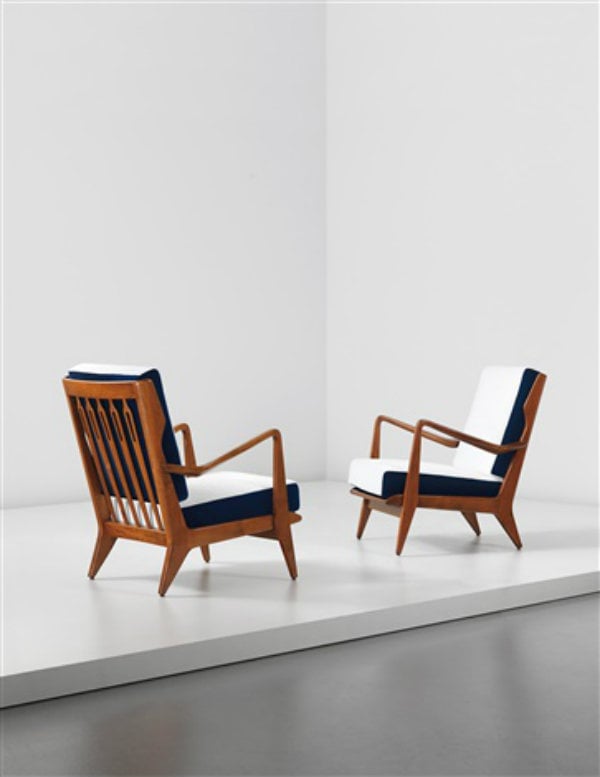Analysis
Market Snapshot: Gio Ponti
Mid-century–mod collectors are rediscovering the maestro of postwar Italian design.

Mid-century–mod collectors are rediscovering the maestro of postwar Italian design.


Gio Ponti, Diamond sofa from the Lisa Ponti Residence, Milan, 1953.
Gio Ponti
Italian, 1891–1979
Eric Appel Antiques
The design market, long infatuated with the French modernists at the expense of their Italian colleagues, has caught on to Gio Ponti’s restrained glamour.
A totemic figure in the world of Italian design, Ponti married streamlined functionalism with playful whimsy over his 50-year career. As a designer, architect, and writer, Ponti stamped his imprimatur on everything from Milan’s Pirelli Tower to the first espresso machine to the venerable design magazine Domus, which he founded in 1928.
But it is the casual elegance of Ponti’s furnishings—his diamond lounge chairs, glass-topped coffee tables, and sleek walnut executive desks—that are attracting 21st-century collectors.
Italian modernism and mid-century antiques dealer Eric Appel told artnet News in an email interview, “It is a fresher field of design that has not been fully tapped as of yet.” Ponti, he said, “is a major modern Italian designer and a huge force in his time.”
Ponti’s signature circular lattice-top coffee tables have become hot commodities at modern design auctions. A 1954 example composed of brass, glass, and white lacquered wood more than doubled its $70,000 high estimate when it sold at Wright auction house in 2011 for $170,500, buyer’s premium included. His auction record remains the Chicago auction house’s 2007 sale of a complete room of furniture designed for the 1951 Milan Triennale, which brought in $324,000.
While Ponti’s market is maturing in step with the market for mid-century Italian design, it isn’t the dark horse it was a decade ago. While important pieces may still appreciate in value, collectors shouldn’t expect to retire off one of Ponti’s aluminum floor lamps or ceramic vases. “In my opinion” Appel said, “the more common items have reached their market value.”
For more art market analysis, please visit artnet Analytics.